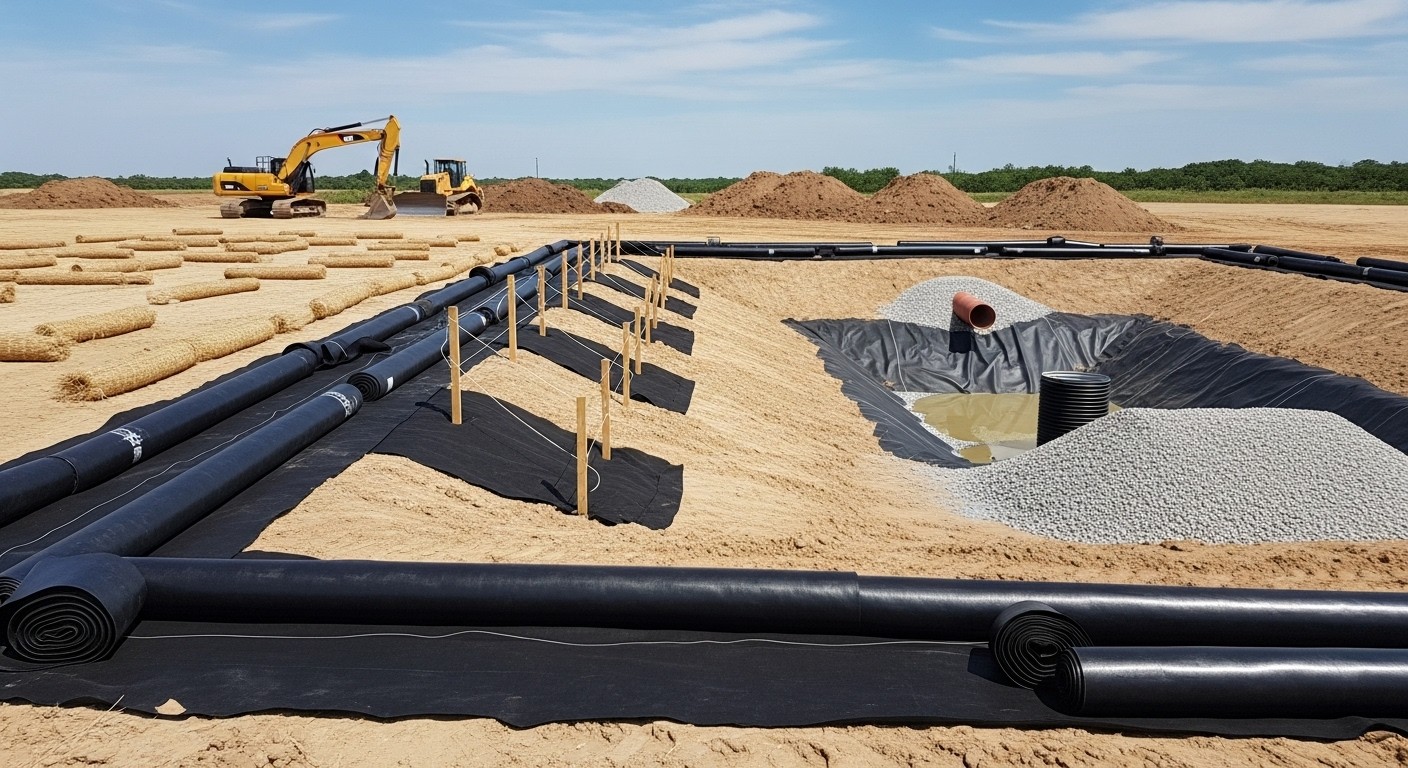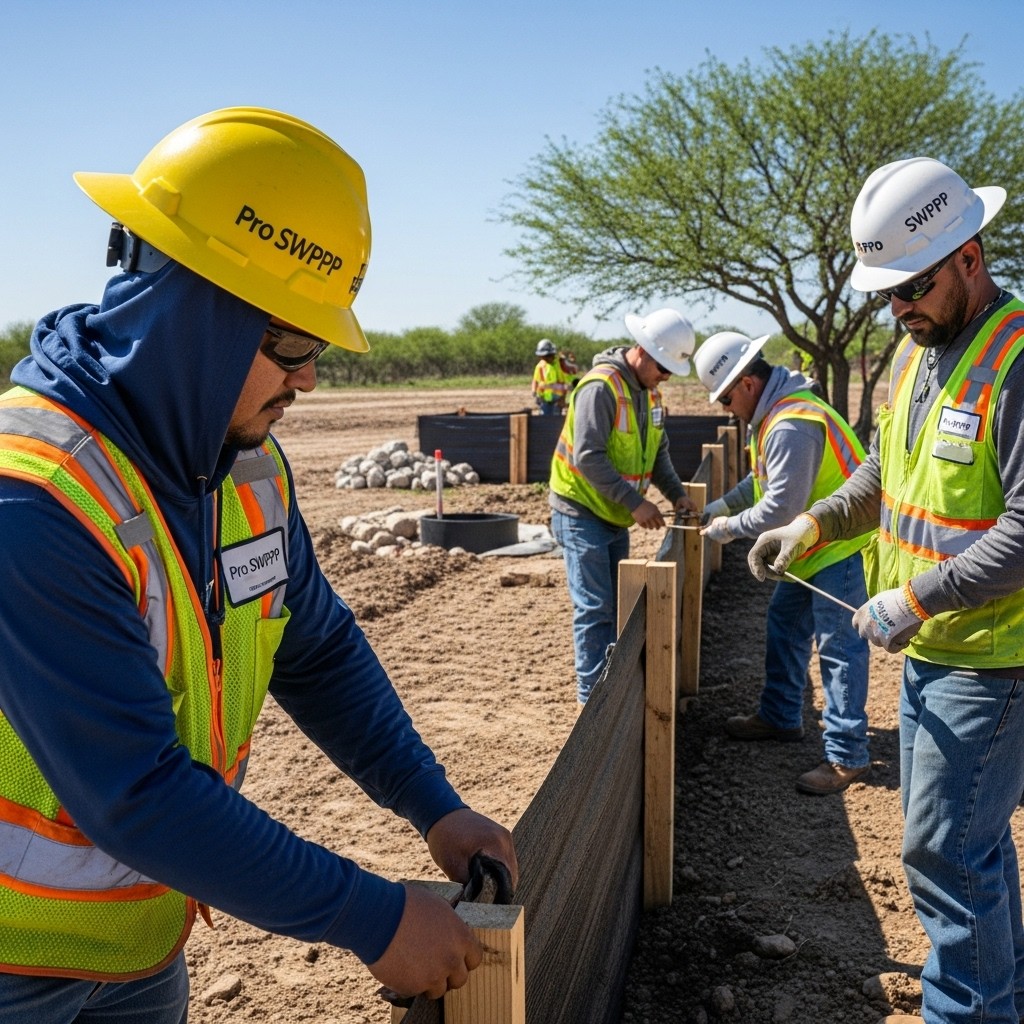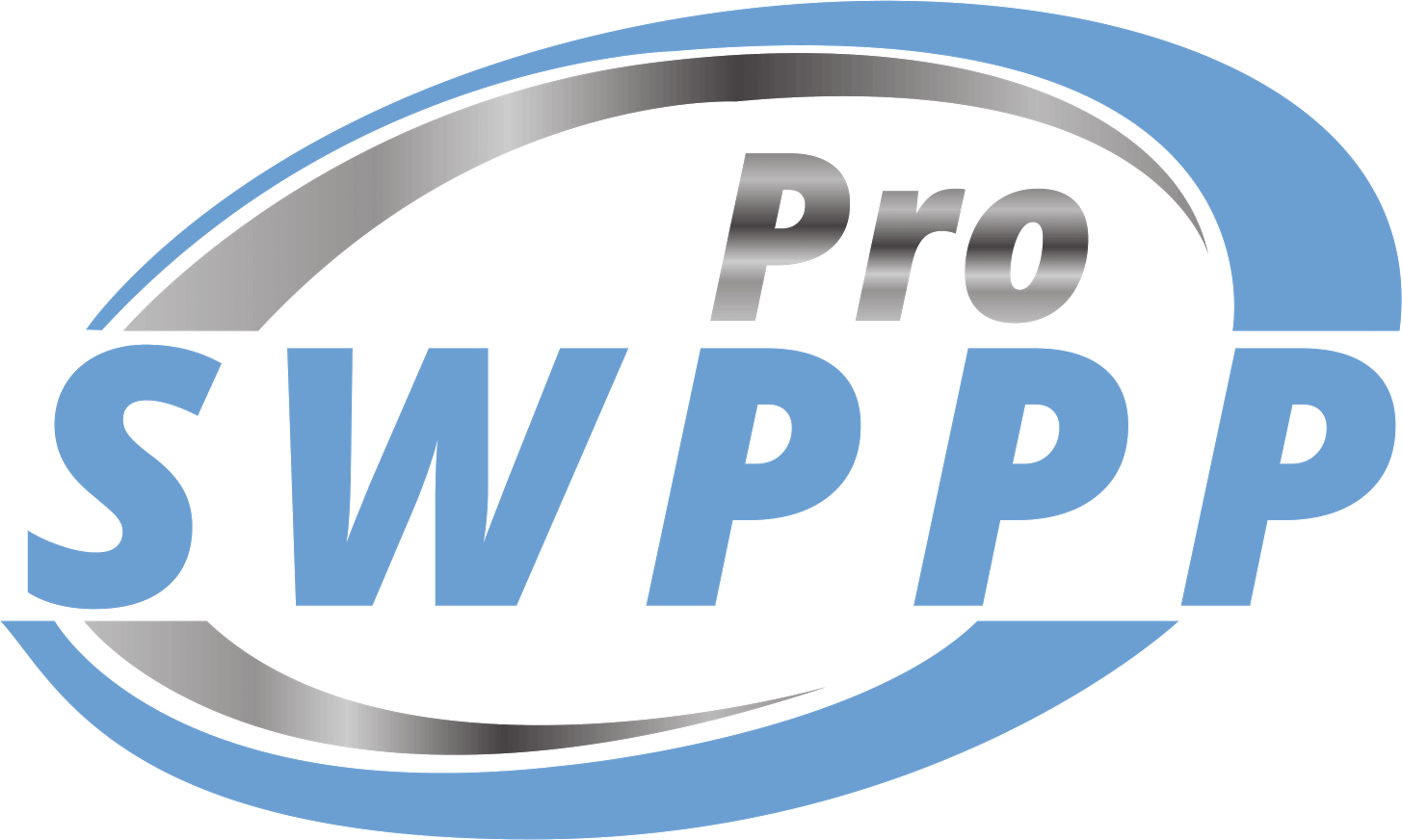You’re building a project in Texas and suddenly everyone’s talking about SWPPPs and NOIs. What the heck are these things? And do you actually need them? Here’s the straight truth without the regulatory rubbish.
If you’re disturbing 1 acre or more of land in Texas, you need both a Stormwater Pollution Prevention Plan (SWPPP) and a Notice of Intent (NOI). Period. No exceptions.
No “but my project is different” stories. The Texas Commission on Environmental Quality (TCEQ) doesn’t care if you’re building a shopping center or a small warehouse. Anything over five acres or considered ‘Part of a Larger Common Plan of Development‘ will need an NOI. Simple 1 to 5 Acre projects are still covered as Small Construction Site Activities, and only require a full SWPPP and TCEQ Small Construction Site Notice.
What Exactly Is Required in Texas?
Texas follows the Clean Water Act through something called the Texas Pollutant Discharge Elimination System (TPDES). Think of it as the state’s version of the federal NPDES program. When you disturb soil on 1 acre or more, you automatically fall under the Construction General Permit (CGP) TXR150000.
Here’s what that means for you. You need a Notice of Intent filed before you start work. This tells TCEQ “hey, we’re starting construction and we have a plan to keep mud out of streams.” Then you need the actual SWPPP — your written game plan for preventing stormwater pollution.

The rules got updated in March 2023, so if you’re working off old information, you might be setting yourself up for violations. The new Construction General Permit has stricter requirements for Best Management Practices (BMPs), inspection schedules, and documentation.
Don’t want to mess with any of these requirements? Order your SWPPP now and Pro SWPPP will take care of everything… so you don’t have to worry about all of the man-hours of learning and stress of the red tape.
The Real Cost of Getting It Wrong
Let me tell you about a Houston contractor who thought his silt fence was good enough. Physical controls looked fine. Erosion Control was working. Sediment Control barriers were in place. But his inspection logs were incomplete, and his SWPPP wasn’t updated when site conditions changed.
TCEQ hit him with fines anyway. Why? Because compliance isn’t just about having the right barriers. It’s about proving you’re following your plan through proper documentation. Fines can reach $32,500 per violation, and each day of non-compliance counts as a separate violation. That’s way too much of a hit to take for a project.
The most expensive SWPPP is the one you don’t have when inspectors show up.
Key Components Your SWPPP Must Include
Your SWPPP can’t be some generic template you downloaded. TCEQ wants site-specific plans that address your actual conditions. Here’s what needs to be in there:
- Site description with topography, soil types, and drainage patterns
- Detailed site map showing construction areas and stormwater flow
- Specific Best Management Practices for your site conditions
- Inspection and maintenance schedules
- Clear roles and responsibilities for everyone on site
- Documentation procedures for compliance records
The plan has to be a living document. When conditions change, your SWPPP needs to change too. Most contractors get nailed because they create the plan once and forget about it.

When You Might Need Local Permits Too
Here’s where it gets tricky. Texas state rules are just the baseline. Cities and counties can add their own stormwater requirements on top of TCEQ regulations.
Houston, Dallas, Austin — they all have local rules that might kick in even for smaller projects. San Antonio (Bexar County) and Austin (Travis County) require Certified SWPPP Inspections, along with El Paso (El Paso County).
Some municipalities require permits for projects under 1 acre if they’re part of a larger development. Others have special requirements near sensitive waterways. You need to check local rules before you assume state permits are enough.
For comprehensive help with Texas stormwater solutions, our team knows both state and local requirements across the entire state.
The Filing Process Made Simple
TCEQ uses an online system called STEERs for permit applications. You’ll submit your NOI through this system at least 48 hours before construction starts. The SWPPP itself doesn’t get submitted — you keep it on site for inspections.
Timing matters. File too late and you can’t legally start work. File too early and your permit might expire before you’re ready. Most contractors aim for 1-2 weeks before their planned start date.
The permit fee is currently $225 for projects greater than 5 acres or considered ‘Part of a Larger Common Plan of Development’ which is just the local city’s way of saying they require a TCEQ Notice of Intent no matter what size your project is… Add in the cost of preparing the SWPPP and NOI, plus ongoing compliance costs, and you’re looking at several thousand dollars for a typical project.
Not sure what your project needs? We are here to help… Take our SWPPP Quiz or Schedule a Free SWPPP Consultation with CPESC Certified SWPPP Expert Derek E. Chinners. He’s a pro at this, with over 17 years of experience in building Stormwater Pollution Prevention Plans.
Why Most Contractors Choose Professional Help
You could try to handle SWPPP requirements yourself for your Texas construction site. But here’s the math that contractors figured out: the time spent learning regulations, creating site-specific plans, and maintaining compliance usually costs more than hiring experts.
Professional SWPPP services like Pro SWPPP handle everything from initial permits through project closeout. We know which BMPs work best for Texas soil conditions, how to write plans that pass TCEQ review, and how to keep you compliant throughout construction.
Plus, we support the project from Start to Finish, so if some city inspector comes out to your site asking you for something you have never heard of, we take care of it. Additionally, you get ‘Plausible Deniability’ if something were to go wrong with your SWPPP, so you can be rest assured Pro SWPPP will step in and take care of it for you, so you don’t have to worry about it.
Compare that to the alternative: learning regulations yourself, creating plans that might not pass review, dealing with potential violations, and managing ongoing compliance while trying to run your construction project.
What Happens After Construction?
Your SWPPP obligations don’t end when construction wraps up. You need to maintain erosion controls until the site is stabilized — usually meaning 70% vegetation cover or equivalent permanent stabilization.
Only after final stabilization can you submit a Notice of Termination (NOT) to close out your permit. Submit too early, and TCEQ will reject your termination. Wait too long, and you’re maintaining unnecessary permits and inspection requirements.
The whole process from NOI to NOT typically runs 6-18 months depending on project size and complexity. During that entire period, you’re responsible for maintaining compliance with your approved SWPPP.
FAQs
Do I need a SWPPP for projects under 1 acre in Texas?
Only if the Local Authority (City or County) consider your project ‘Part of a Larger Common Plan of Development’. Generally no for state requirements, but local municipalities may have different rules. Some cities require stormwater permits for projects as small as 0.25 acres, especially in sensitive watersheds.
How long does TCEQ take to process NOI applications?
If you choose Turnkey Service with Pro SWPPP we can have your TCEQ permit in a few hours. Officially, you then have 48 hours and you can proceed with construction per TCEQ regulations.
Can I use the same SWPPP for multiple project phases?
Yes, but the SWPPP must be updated for each phase to reflect current site conditions, BMPs, and drainage patterns. Generic plans that don’t match actual site conditions often lead to violations.
What’s the difference between erosion control and sediment control?
Erosion Control prevents soil from moving in the first place – think slope stabilization and surface cover. Sediment Control captures soil that’s already moving – like silt fences and sediment basins.
How often do I need to inspect my BMPs?
The Construction General Permit requires inspections at least once every 7 days or every 14 days and within 24 hours of any storm event of 0.5 inches or greater. All inspections must be documented and kept on file in the SWPPP for a period of three years. Choose Pro SWPPP’s E-Portal for Inspections and all documents are stored in the cloud on your behalf per TCEQ Requirements.
Ready to get compliant without the headaches? Pro SWPPP handles Texas stormwater permits for contractors, design build contractors, engineering firms, architectural firms, site work contractors, and developers who want to focus on their build instead of paperwork.
